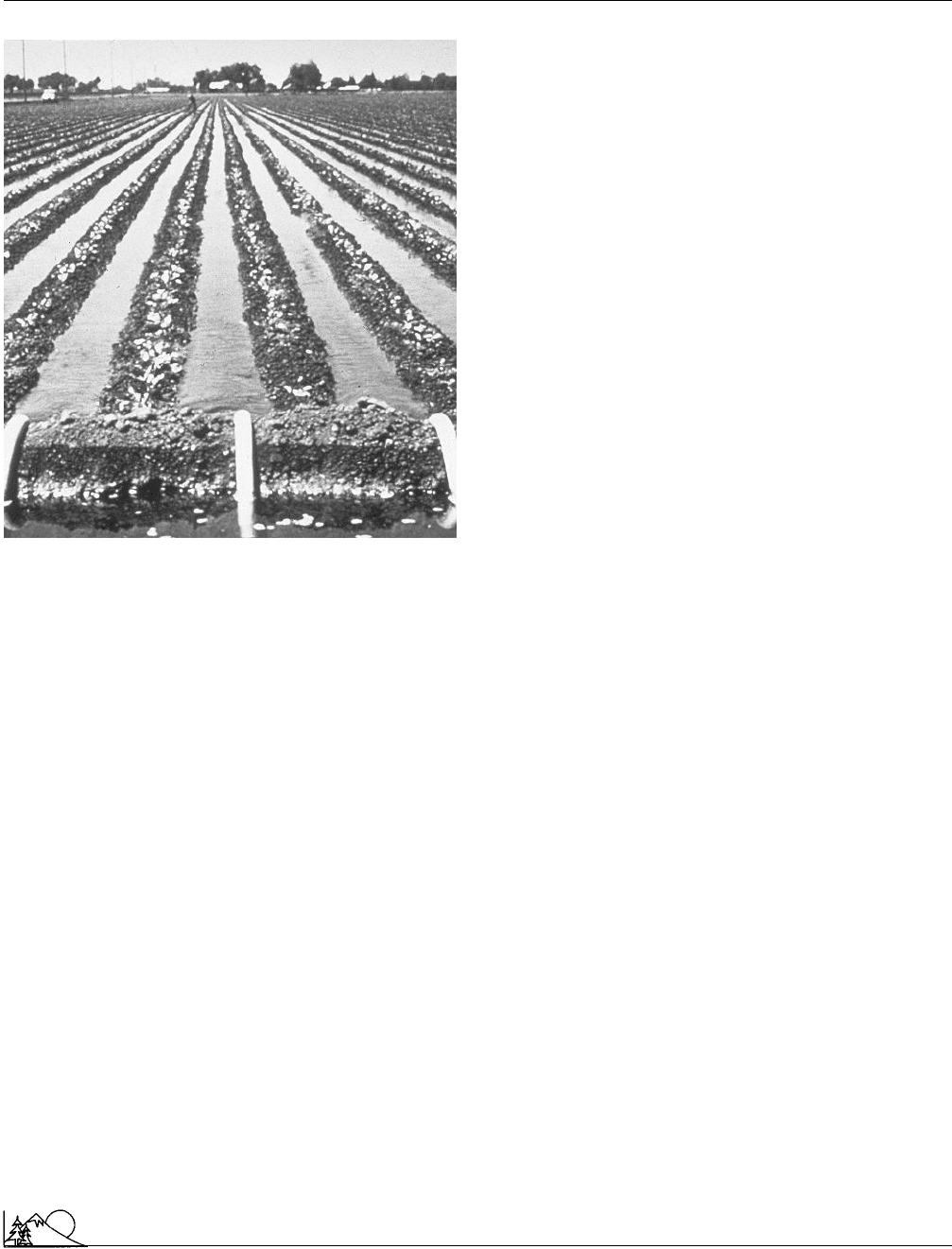Environmental Encyclopedia
Подождите немного. Документ загружается.


Environmental Encyclopedia 3
International Primate Protection League
sustainable development since the Earth Summit in 1992.
IISD has produced two publications, Trade and Sustainable
Development and Guidelines for the Practical Assessment of
Progress Toward Sustainable Development.
[Carol Steinfeld]
R
ESOURCES
O
RGANIZATIONS
International Institute for Sustainable Development, 161 Portage Avenue
East, 6th Floor, Winnipeg, ManitobaCanada R3B 0Y4 (204) 958-7700,
Fax: (204) 958-7710, Email: info@iisd.ca, <http://www.iisd.org>
International Joint Commission
The International Joint Commission (IJC) is a permanent,
independent organization of the United States and Canada
formed to resolve trans-boundary ecological concerns.
Founded in 1912 as a result of provisions under the Boundary
Waters Treaty of 1909, the IJC was patterned after an earlier
organization, the Joint Commission, which was formed by
the United States and Britain.
The IJC consists of six commissioners, with three
appointed by the President of the United States, and three by
the Governor-in-Council of Canada, plus support personnel.
The commissioners and their organizations generally operate
freed from direct influence or instruction from their national
governments. The IJC is frequently cited as an excellent
model for international dispute resolution because of its
history of successfully and objectively dealing with
natural
resources
and environmental disputes between friendly
countries.
The major activities of the IJC have dealt with appor-
tioning, developing, conserving, and protecting the bina-
tional
water resources
of the United States and Canada.
Some other issues, including transboundary
air pollution
,
have also been addressed by the Commission.
The power of the IJC comes from its authority to
initiate scientific and socio-economic investigations, conduct
quasi-judicial inquiries, and arbitrate disputes.
Of special concern to the IJC have been issues related
to the
Great Lakes
. Since the early 1970s, IJC activities
have been substantially guided by provisions under the 1972
and 1978
Great Lakes Water Quality Agreement
plus
updated protocols. For example, it is widely acknowledged,
and well documented, that environmental quality and
eco-
system health
have been substantially degraded in the Great
Lakes. In 1985, the
Water Quality
Board of the IJC recom-
mended that states and provinces with Great Lakes bound-
aries make a collective commitment to address this commu-
nal problem, especially with respect to
pollution
. These
governments agreed to develop and implement remedial ac-
767
tion plans (RAPs) towards the restoration of
environmental
health
within their political jurisdictions. Forty-three areas
of concern have been identified on the basis of environmental
pollution, and each of these will be the focus of a remedial
action plan.
An important aspect of the design and intent of the
overall program, and of the individual RAPs, will be devel-
oping a process of integrated
ecosystem management
.
Ecosystem
management involves systematic, comprehensive
approaches toward the restoration and protection of environ-
mental quality. The ecosystem approach involves consider-
ation of interrelationships among land, air, and water, as
well as those between the inorganic
environment
and the
biota, including humans. The ecosystem approach would
replace the separate, more linear approaches that have tradi-
tionally been used to manage environmental problems. These
conventional attempts have included directed programs to
deal with particular resources such as fisheries, migratory
birds,
land use
, or point sources and area sources of toxic
emissions. Although these non-integrated methods have
been useful, they have been limited because they have failed
to account for important inter-relationships among environ-
mental management programs, and among components of
the ecosystem.
[Bill Freedman Ph.D.]
R
ESOURCES
O
RGANIZATIONS
International Joint Commission, 1250 23rd Street, NW, Suite 100,
Washington, D.C. USA 20440 (202) 736-9000, Fax: (202) 735-9015, ,
<http://www.ijc.org>
International Primate Protection
League
Founded in 1974 by Shirley McGreal, International Primate
Protection League (IPPL) is a global
conservation
organi-
zation that works to protect nonhuman primates, especially
monkeys and apes (
chimpanzees
, orangutans,
gibbons
,
and gorillas).
IPPL has 30,000 members, branches in the United
Kingdom, Germany, and
Australia
, and field representa-
tives in 31 countries. Its advisory board consists of scientists,
conservationists, and experts on primates, including the
world-renowned primatologist
Jane Goodall
, whose fa-
mous studies and books are considered the authoritative texts
on chimpanzees. Her studies have also heightened public
interest and sympathy for chimpanzees and other nonhuman
primates.

Environmental Encyclopedia 3
International Register of Potentially Toxic Chemicals
IPPL runs a sanctuary and
rehabilitation
center at
its Summerville, South Carolina headquarters, which houses
two dozen gibbons and other abandoned, injured, or trauma-
tized primates who are refugees from medical laboratories
or abusive pet owners. IPPL concentrates on investigating
and fighting the multi-million dollar commercial trafficking
in primates for medical laboratories, the
pet trade
, and zoos,
much of which is illegal trade and smuggling of
endangered
species
protected by international law. IPPL is considered
the most active and effective group working to stem the
cruel and often lethal trade in primates.
IPPL’s work has helped to save the lives of literally
tens of thousands of monkeys and apes, many of which are
threatened or endangered
species
. For example, the group
was instrumental in persuading the governments of India
and Thailand to ban or restrict the export of monkeys, which
were being shipped by the thousands to research laboratories
and pet stores across the world.
The trade in primates is especially cruel and wasteful,
since a common way of capturing them is by shooting the
mother, which then enables poachers to capture the infant.
Many captured monkeys and apes die enroute to their desti-
nations, often being transported in sacks, crates, or hidden
in other devices.
IPPL often undertakes actions and projects that are
dangerous and require a good deal of skill. In 1992, its
investigations have led to the conviction of a Miami, Florida,
animal dealer for conspiring to help smuggle six baby orang-
utans captured in the jungles of Borneo. The endangered
orangutan
is protected by the Convention on International
Trade in Endangered Species of
Fauna
and Flora (CITES),
as well as by the United States
Endangered Species Act
.
In retaliation, the dealer unsuccessfully sued McGreal, as
did a multi-national corporation she once criticized for its
plan to capture chimpanzees and use them for hepatitis
research in Sierra Leone.
A more recent victory for IPPL occurred in April
2002. In 1997, Chicago O’Hare airport received two ship-
ments from Indonesia, each of which contained more than
250 illegally imported monkeys. Included in the shipments
were dozens of unweaned baby monkeys. After several years
of pursuing the issue, the U.S.
Fish and Wildlife Service
and
the U.S. Federal prosecutors charged the LABS Company (a
breeder of monkeys for research based in the United States)
and several of its employees, including its former president,
on eight felonies and four misdemeanors.
IPPL publishes IPPL News several times a year and
sends out periodic letters alerting members of events and
issues that affect primates.
[Lewis G. Regenstein]
768
R
ESOURCES
O
RGANIZATIONS
International Primate Protection League, P.O. Box 766, Summerville, SC
USA 29484 (843) 871-2280, Fax: (843) 871-7988, Email: ippl@awod.com,
<http://ippl.org>
International Register of Potentially
Toxic Chemicals (U. N. Environment
Programme)
The International Register of Potentially Toxic
Chemicals
is published by the
United Nations Environment Pro-
gramme
(UNEP). Part of UNEP’s three-pronged
Earth-
watch
program, the register is an international inventory of
chemicals that threaten the
environment
. Along with the
Global Environment Monitoring System
and
INFOT-
ERRA
, the register monitors and measures environmental
problems worldwide. Information from the register is rou-
tinely shared with agencies in developing countries.
Third
World
countries have long been the toxic dumping grounds
for the world, and they still use many chemicals that have
been banned elsewhere. Environmental groups regularly
send information from the register to toxic chemical users
in developing countries as part of their effort to stop the
export of toxic
pollution
.
R
ESOURCES
O
RGANIZATIONS
International Register of Potentially Toxic Chemicals, Chemin des
Ane
´
mones 15, Gene
`
ve, Switzerland CH-1219 +41-22-979 91 11, Fax:
+41-22-979 91 70, Email: chemicals@unep.ch
International Society for
Environmental Ethics
The International Society for
Environmental Ethics
(ISEE)
is an organization that seeks to educate people about the
environmental ethics and philosophy concerning
nature
.
An environmental ethic is the philosophy that humans have
a moral duty to sustain the natural
environment
and at-
tempts to answer how humans should treat other
species
(plant and animal), use Earth’s
natural resources
, and place
value on the aesthetic experiences of nature.
The society is an auxiliary organization of the Ameri-
can Philosophical Association, with about 700 members in
over 20 countries. Many of ISEE’s current members are
philosophers, teachers, or environmentalists. The ISEE offi-
cers include president Mark Sagoff (Institute for Philosophy
and Public Policy, University of Maryland) and John Baird
Callicott, vice president, (professor of philosophy at the Uni-
versity of North Texas). Two other key members are editors

Environmental Encyclopedia 3
International trade in toxic waste
of the ISEE newsletter, Jack Weir and
Holmes Rolston
,
III (Professor of Philosophy, Colorado State University).
All have contributed to the ongoing ISEE Master Environ-
mental Ethics Bibliography.
ISEE publishes a quarterly newsletter available to
members in print form and maintains an Internet site of
back issues. Of special note is the ISEE Bibliography, an
ongoing project that contains over 5,000 records from jour-
nals such as Environmental Ethics, Environmental Values,
and the Journal of Agricultural and Environmental Ethics.
Another work in progress, the ISEE Syllabus Project,
continues to be developed by Callicott and Robert Hood,
doctoral candidate at Bowling Green State University. They
maintain a database of course offerings in environmental
philosophy and ethics, based on information from two-year
community colleges and four-year state universities, private
institutions, and master’s- and doctorate-granting universi-
ties. ISEE supports the enviroethics program which has
spurred many Internet discussion groups and is constantly
expanding into new areas of communication.
[Nicole Beatty]
R
ESOURCES
O
RGANIZATIONS
International Society for Environmental Ethics, Environmental Philosophy
Inc., Department of Philosophy, University of North Texas, P.O. Box
310980, Denton, TX USA 76203-0980, <http://www.cep.unt.edu/
ISEE.html>
International trade in toxic waste
Just as VCRs, cars, and laundry soap are traded across bor-
ders, so too is the waste that accompanies their production.
In the United States alone, industrial production accounts
for at least 500 million lb (230 million kg) of
hazardous
waste
a year. The industries of other developed nations also
produce waste. While some of it is disposed within national
borders, a portion is sent to other countries where costs are
cheaper and regulations less stringent than in the waste’s
country of origin.
Unlike consumer products, internationally traded haz-
ardous waste has begun to meet local opposition. In some
recent high-profile cases, barges filled with waste have trav-
eled the world looking for final resting places. In at least
one case, a ship may have dumped about ten tons of toxic
municipal incinerator ash in the ocean after being turned
away from dozens of ports. In recent years national and
international bodies have begun to voice official opposition
to this dangerous trade through bans and regulations.
The international trade in toxic wastes is, at bottom,
waste disposal with a foreign-relations twist. Typically a
769
manufacturing facility generates waste during the production
process. The facility manager pays a waste-hauling firm to
dispose of the waste. If the landfills in the country of origin
cost too much, or if there are no landfills that will take the
waste, the disposal firm will find a cheaper option, perhaps
a
landfill
in another country. In the United States, the
shipper must then notify the
Environmental Protection
Agency
(EPA), which then notifies the State Department.
After ascertaining that the destination country will indeed
accept the waste, American regulators approve the sale.
Disposing of the waste overseas in a landfill is only
the most obvious example of this international trade. Waste
haulers also sell their cargo as raw materials for
recycling
.
For example, used lead-acid batteries discarded by American
consumers are sent to Brazil where factory workers extract
and resmelt the
lead
. Though the lead-acid alone would
classify as hazardous, whole batteries do not. Waste haulers
can ship these batteries overseas without notification to Mex-
ico, Japan, and Canada, among other countries. In other
cases, waste haulers sell products, like DDT, that have been
banned in one country to buyers in another country that has
no ban. Whatever the strategy for disposal, waste haulers are
most commonly small, independent operators who provide a
service to waste producers in industrialized countries.
These haulers bring waste to other countries to take
advantage of cheaper disposal options and less stringent
regulatory climates. Some countries forbid the disposal of
the certain kinds of waste. Countries without such prohibi-
tions will import more waste. Cheap landfills depend on
cheap labor and land. Countries with an abundance of both
can become attractive destinations. Entrepreneurs or govern-
ment officials in countries, like Haiti, or regions within
countries, such as Wales, that lack a strong manufacturing
base, view waste disposal as a viable, inexpensive business.
Inhabitants may view it as the best way to make money and
create jobs. Simply by storing hazardous waste, the country
of Guinea-Bissau could have made $120 million, more
money than its annual budget.
Though the
less developed countries
(LDC) pre-
dictably receive large amounts of toxic waste, the bulk of
the international trade occurs between industrialized nations.
Canada and the United Kingdom in particular import large
volumes of toxic waste. Canada imports almost 85% of the
waste sent abroad by American firms, approximately 150,000
lb (70,000 kg) per year. The bulk of the waste ends up at
an incinerator in Ontario or a landfill in Quebec. Because
Canada’s disposal regulations are less strict than United
States laws, the operators of the landfill and incinerator can
charge lower fees than similar disposal sites in the United
States.
A waste hauler’s life becomes complicated when the
receiving country’s government or local activists discover that

Environmental Encyclopedia 3
International trade in toxic waste
the waste may endanger health and the
environment
. Local
regulators may step in and forbid the sale. This happened
many times in the case of the Khian Sea, a ship that had
contracted to dispose of Philadelphia’s incinerator ash. The
ship was turned away from Haiti, from Guinea-Bissau, from
Panama, and from Sri Lanka. For two years, beginning in
1986, the ship carried the toxic ash from port to port looking
for a home for its cargo before finally mysteriously losing
the ash somewhere in the Indian Ocean.
This early
resistance
to toxic-waste dumping has
since led to the negotiation of international treaties forbid-
ding or regulating the trade in toxic waste. In 1989, the
African, Caribbean, and Pacific countries (ACP) and the
countries belonging to the European Economic Community
(EEC) negotiated the Lome IV Convention, which bans
shipments of nuclear and hazardous waste from the EEC
to the ACP countries. ACP countries further agreed not to
import such waste from non-EEC countries. Environmen-
talists have encouraged the EEC to broaden its commitment
to limiting waste trade.
In the same year, under the auspices of the
United
Nations Environment Programme
(UNEP), the
Basel
Convention
on the Control of Transboundary Movements
of Hazardous Wastes and Their Disposal was negotiated.
This requires shippers to obtain government permission
from the destination country before sending waste to foreign
landfills or incinerators. Critics contend that Basel merely
formalizes the trade.
In 1991, the nations of the Organization of African
Unity negotiated another treaty restricting the international
waste trade. The Bamako Convention on the Ban of the
Import into Africa and the Control of Transboundary Move-
ment and Management of Hazardous Wastes within Africa
criminalized the import of all hazardous waste. Bamako
further forbade waste traders from importing to Africa mate-
rials that had been banned in one country to a country
that has no such ban. Bamako also radically redefined the
assessment of what constitutes a health hazard. Under the
treaty, all
chemicals
are considered hazardous until proven
otherwise.
These international strategies find their echoes in na-
tional law. Less developed countries have tended to follow
the Lome and Bamako examples. At least eighty-three Afri-
can, Latin-Caribbean, and Asian-Pacific countries have
banned hazardous waste imports. And the United States, in
a policy similar to the Basel Convention, requires hazardous
waste shipments to be authorized by the importing country’s
government.
The efforts to restrict toxic waste trade reflect, in
part, a desire to curb environmental inequity. When waste
flows from a richer country to a poorer country or region,
the inhabitants living near the incinerator, landfill, or
770
recycling facility are exposed to the dangers of toxic
compounds. For example, tests of workers in the Brazilian
lead resmelting operation found blood-lead levels several
times the United States standard. Lead was also found
in the water supply of a nearby farm after five cows died.
The loose regulations that keep prices low and attract
waste haulers mean that there are fewer safeguards for
local health and the environment. For example, leachate
from unlined landfills can contaminate local
groundwater
.
Jobs in the disposal industry tend to be lower paying than
jobs in manufacturing. The inhabitants of the receiving
country receive the wastes of industrialization without the
benefits.
Stopping the waste trade is a way to force manufac-
turers to change production processes. As long as cheap
disposal options exist, there is little incentive to change.
A waste-trade ban makes hazardous waste expensive to
discard, and will force business to search for ways to
reduce this cost.
Companies that want to reduce their hazardous waste
may opt for source reduction, which limits the hazardous
components in the production process. This can both
reduce production costs and increase output. A Monsanto
facility in Ohio saved more than $3 million dollars a year
while eliminating more than 17 million lb (8 million kg)
of waste. According to officials at the plant, average yield
increased by 8%. Measures forced by a lack of disposal
options can therefore benefit the corporate bottom line,
while reducing risks to health and the environment. See also
Environmental law; Environmental policy; Groundwater
pollution; Hazardous waste siting; Incineration; Industrial
waste treatment; Leaching; Ocean dumping; Radioactive
waste; Radioactive waste management; Smelter; Solid
waste; Solid waste incineration; Solid waste recycling and
recovery; Solid waste volume reduction; Storage and trans-
port of hazardous materials; Toxic substance; Waste man-
agement; Waste reduction
[Alair MacLean]
R
ESOURCES
B
OOKS
Dorfman, M., W. Muir, and C. Miller. Environmental Dividends: Cutting
More Chemical Waste. New York: INFORM, 1992.
Moyers, B. D. Global Dumping Ground: The International Traffic in Hazard-
ous Waste. Cabin John, MD: Seven Locks Press, 1990.
Vallette, J., and H. Spalding. The International Trade in Wastes: A Greenpeace
Inventory. Washington, DC: Greenpeace, 1990.
P
ERIODICALS
Chepesiuk, R. “From Ash to Cash: The International Trade in Toxic
Waste.” E Magazine 2 (July-August 1991): 30–37.

Environmental Encyclopedia 3
Intrinsic value
International Union for the
Conservation of Nature and Natural
Resources
see
IUCN—The World Conservation Union
International Voluntary Standards
International Voluntary Standards are industry guidelines
or agreements that provide technical specifications so that
products, processes, and services can be used worldwide. The
need for development of a set of international standards to
be followed and used consistently for environmental man-
agement systems was recognized in response to an increased
desire by the global community to improve environmental
management practices. In the early 1990s, the International
Organization for Standardization or ISO, which is located
in Geneva, Switzerland, began development of a strategic
plan to promote a common international approach to envi-
ronmental management. ISO 14000 is the title of a series
of voluntary international environmental standards that is
under development by ISO and is 142 member nations,
including the United States. Some of the standards devel-
oped by ISO include standardized sampling, testing and
analytical methods for use in the monitoring of environmen-
tal variables such as the quality of air, water and
soil
.
[Marie H. Bundy]
International Whaling Commission
see
International Convention for the
Regulation of Whaling (1946)
International Wildlife Coalition
The International
Wildlife
Coalition (IWC) was established
by a small group of individuals who came from a variety of
environmental and
animal rights
organizations in 1984.
Like many NGOs (nongovernmental organizations) that
arose in the 1970s and 1980s their initial work involved the
protection of
whales
. The IWC raised money for whale
conservation
programs on endangered Atlantic humpback
whale populations. This was one of the first
species
where
researchers identified individual animals through tail photo-
graphs. Using this technique the IWC developed what is
now a common tool, a whale adoption program based on
individual animals with human names.
From that basis, the fledgling group established itself
in an advocacy role with three principles in their mandate:
to prevent cruelty to wildlife, to prevent killing of wildlife,
and to prevent destruction of wildlife
habitat
. In light of
771
those principles, the IWC can be characterized as an ex-
tended animal rights organization. They maintain the “pre-
vention of cruelty” aspect common to humane societies,
perhaps the oldest progenitor of animal rights groups. In
standing by an ethic of preventing killing, they stand with
animal rights groups, but by protecting habitat they take a
more significant step by acting in a broad way to achieve
their initial two principles.
The program thus works at both ends of the spectrum,
undertaking
wildlife rehabilitation
and other programs
dealing with the individual animals, as well as lobbying and
promoting letter writing campaigns to improve wildlife legis-
lation. For example, they have used their Brazilian office to
create pressure to combat the international trade in exotic
pets, and their Canadian office to oppose the harp seal hunt
and the deterioration of Canada’s impending
endangered
species
legislation. Their United States-based operation has
built a reputation in the research field working with govern-
ment agencies to ensure that whale-watching on the eastern
seaboard does not harm the whales. Offices in the United
Kingdom are a focus for the IWC concern over the European
Community policies, such as lifting their ban on importing
fur from animals killed in leg hold traps.
It has become evident that the diversity within the
varied groups that constitute the environmental community
is a positive force, however, most conservation NGOs do
not cross the gulf between animal rights and habitat conser-
vation. A clear distinction exists between single animal ap-
proaches and broader conservation ideals, as they appeal
to different protection strategies, and potentially different
donors. Although the emotional appeal of releasing por-
poises from fishing nets alive outranks backroom lobbying
for changes in fishing regulations, the lobbying effort protect
more porpoises. The IWC may be deemed more successful
by exploiting a range of targets, or less so than a dedicated
advocacy group applying all its focus to one issue. They can
point to a growth from a modest 3,000 supporters in the
beginning, to over 100,000 people supporting the Interna-
tional Wildlife Coalition today.
[David Duffus]
R
ESOURCES
O
RGANIZATIONS
International Wildlife Coalition, 70 East Falmouth Highway, East
Falmouth, MA USA 02536 (508) 548-8328, Fax: (508) 548-8542, Email:
iwchq@iwc.org, <http://www.iwc.org>
Intrinsic value
Saying that an object has intrinsic value means that, even
though it has no specific use, market, or monetary value, it

Environmental Encyclopedia 3
Introduced species
nevertheless can be valuable in and of itself and for its own
sake. The
Northern spotted owl
(Strix occidentalis caurina)
for example, has no instrumental or market value; it is not
a means to any human end, nor is it sold or traded in any
market. But, environmentalists argue, utility and price are
not the only measures of worth. Indeed, they say, some of
the things humans value most—truth, love, respect—are not
for sale at any price, and to try to put a price on them
would only tend to cheapen them. Such things have “intrinsic
value.”
Similarly, environmentalists say, the natural
environ-
ment
and its myriad life-forms are valuable in their own
right.
Wilderness
, for instance, has intrinsic value and is
worthy of protecting for its own sake. To say that something
has intrinsic value is not necessarily to deny that it may also
have instrumental value for humans and non-human animals
alike. Deer, for example, have intrinsic value; but they also
have instrumental value as a food source for
wolves
and
other predator
species
. See also Shadow pricing
Introduced species
Introduced
species
(also called invasive species) are those
that have been released by humans into an area to which
they are not native. These releases can occur accidently, from
places such as the cargo holds of ships. They can also occur
intentionally, and species have been introduced for a range of
ornamental and recreational uses, as well as for agricultural,
medicinal, and
pest
control purposes.
Introduced species can have dramatically unpredictable
effects on the
environment
and native species. Such effects
can include overabundance of the introduced species, com-
petitive displacement, and disease-caused
mortality
of the
native species. Numerous examples of adverse consequences
associated with the accidental release of species or the long
term effects of deliberately introduced species exist in the
United States and around the world. Introduced species can
be beneficial as long as they are carefully regulated. Almost
all the major varieties of grain and vegetables used in the
United States originated in other parts of the world. This
includes corn, rice, wheat, tomatoes, and potatoes.
The
kudzu
vine, which is native to Japan, was deliber-
ately introduced into the southern United States for
erosion
control and to shade and feed livestock. It is, however, an
extremely aggressive and fast-growing species, and it can
form continuous blankets of foliage that cover forested hill-
sides, resulting in malformed and dead trees. Other species
introduced as ornamentals have spread into the wild, displac-
ing or outcompeting native species. Several varieties of culti-
vated roses, such as the multiflora rose, are serious pests and
nuisance shrubs in field and pastures. The
purple loos-
772
estrife
, with its beautiful purple flowers, was originally
brought from Europe as a garden ornamental. It has spread
rapidly in freshwater
wetlands
in the northern United
States, displacing other plants such as cattails. This is viewed
with concern by ecologists and
wildlife
biologists since the
food value of loosestrife is minimal, while the roots and
starchy tubes of cattails are an important food source to
muskrats. Common ragweed was accidently introduced to
North America, and it is now a major health irritant for
many people.
Introduced species are sometimes so successful because
human activity has changed the conditions of a particular
environment. The Pine Barrens of southern New Jersey form
an
ecosystem
that is naturally acidic and low in nutrients.
Bogs in this area support a number of slow-growing plant
species that are adapted to these conditions, including peat
moss, sundews, and pitcher plants. But
urban runoff
, which
contain fertilizers, and
wastewater effluent
, which is high
in both
nitrogen
and
phosphorus
, have enriched the bogs;
the waters there have become less acidic and shown a gradual
elevation in the concentration of nutrients. These changes
in
aquatic chemistry
have resulted in changes in plant
species, and the acidophilus mosses and herbs are being
replaced by fast-growing plants that are not native to the
Pine Barrens.
Zebra mussels were transported by accident from Eu-
rope to the United States, and they are causing severe prob-
lems in the
Great Lakes
. They proliferate at a prodigious
rate, crowding out native species and clogging industrial
and municipal water-intake pipes. Many ecologists fear that
shipping traffic will transport the
zebra mussel
to harbors
all over the country. Scattered observations of this tiny crus-
tacean have already been made in the lower
Hudson River
in New York.
Although introduced species are usually regarded with
concern, they can occasionally be used to some benefit. The
water hyacinth
is an aquatic plant of tropical origin that
has become a serious clogging nuisance in lakes, streams,
and waterways in the southern United States. Numerous
methods of physical and chemical removal have been at-
tempted to eradicate or control it, but research has also
established that the plant can improve
water quality
. The
water hyacinth has proved useful in the withdrawal of nutri-
ents from sewage and other wastewater. Many constructed
wetlands, polishing ponds, and waste lagoons in waste treat-
ment plants now take advantage of this fact by routing
wastewater through floating beds of water hyacinth.
The reintroduction of native species is extremely diffi-
cult, and it is an endeavor that has had low rates of success.
Efforts by the
Fish and Wildlife Service
to reintroduce the
endangered
whooping crane
into native
habitat
in the
southwestern United States were initially unsuccessful be-

Environmental Encyclopedia 3
Ionizing radiation
cause of the fragility of the eggs, as well as the poor parenting
skills of birds raised in captivity. The service then devised
a strategy of allowing the more common sandhill crane to
incubate the eggs of captive whooping cranes in
wilderness
nests, and the fledglings were then taught survival skills by
their surrogate parents. Such projects, however, are extremely
time and labor intensive; they are also costly and difficult
to implement for large numbers of most species.
Due to the difficulties and expense required to protect
native species and to eradicate introduced species, there are
not many international laws and policies that seek to prevent
these problems before they begin. Thus customs agents at
ports and airports routinely check luggage and cargo for
live plant and animal materials to prevent the accidental
or deliberate transport of non-native species. Quarantine
policies are also designed to reduce the
probability
of
spreading introduced species, particularly diseases, from one
country to another.
There are similar concerns about genetically engi-
neered organisms, and many have argued that their creation
and release could have the same devastating environmental
consequences as some introduced species. For this reason,
the use of bioengineered organisms is highly regulated; both
the
Food and Drug Administration
and the
Environmen-
tal Protection Agency
(EPA) impose strict controls on the
field testing of bioengineered products, as well as on their
cultivation and use.
Conservation
policies for the protection of native spe-
cies are now focused on habitats and ecosystems rather than
single species. It is easier to prevent the encroachment of
introduced species by protecting an entire ecosystem from
disturbance, and this is increasingly well recognized both
inside and outside the conservation community. See also
Bioremediation; Endangered species; Fire ants; Gypsy moth;
Rabbits in Australia; Wildlife management
[Usha Vedagiri and Douglas Smith]
R
ESOURCES
B
OOKS
Common Weeds of the United States. United States Department of Agricul-
ture. New York: Dover Publications, 1971.
Forman, R. T. T., ed. Pine Barrens: Ecology and Landscape. New York:
Academic Press, 1979.
Inversion
see
Atmospheric inversion
773
Iodine 131
A radioactive
isotope
of the element iodine. During the
1950s and early 1960s, iodine-131 was considered a major
health hazard to humans. Along with cesium-137 and stron-
tium-90, it was one of the three most abundant isotopes
found in the fallout from the atmospheric testing of
nuclear
weapons
. These three isotopes settled to the earth’s surface
and were ingested by cows, ultimately affecting humans by
way of dairy products. In the human body, iodine-131, like
all forms of that element, tends to concentrate in the thyroid,
where it may cause
cancer
and other health disorders. The
Chernobyl nuclear reactor explosion is known to have re-
leased large quantities of iodine-131 into the
atmosphere
.
See also Radioactivity
Ion
Forms of ordinary chemical elements that have gained or
lost electrons from their orbit around the atomic nucleus
and, thus, have become electrically charged. Positive ions
(those that have lost electrons) are called cations because
when charged electrodes are placed in a solution containing
ions the positive ions migrate to the cathode (negative elec-
trode). Negative ions (those that have gained extra electrons)
are called anions because they migrate toward the anode
(positive electrode). Environmentally important cations in-
clude the
hydrogen
ion (H
+
) and dissolved metals. Impor-
tant anions include the hydroxyl ion (OH
-
) as well as many
of the dissolved ions of nonmetallic elements. See also Ion
exchange; Ionizing radiation
Ion exchange
The process of replacing one
ion
that is attached to a charged
surface with another. A very important type of ion exchange
is the exchange of cations bound to
soil
particles. Soil
clay
minerals
and organic matter both have negative surface
charges that bind cations. In a fertile soil the predominant
exchangeable cations are Ca
2+
,Mg
2+
and K
+
.In
acid
soils
Al
3+
and H
+
are also important exchangeable ions. When
materials containing cations are added to soil, cations
leach-
ing
through the soil are retarded by cation exchange.
Ionizing radiation
High-energy radiation with penetrating competence such as
x rays and gamma rays which induces ionization in living
material. Molecules are bound together with covalent bonds,
and generally an even number of electrons binds the atoms
together. However, high-energy penetrating radiation can

Environmental Encyclopedia 3
Iron minerals
fragment molecules resulting in atoms with unpaired elec-
trons known as “free radicals.” The ionized “free radicals”
are exceptionally reactive, and their interaction with the
macromolecules (DNA, RNA, and proteins) of living cells
can, with high dosage, lead to cell death. Cell damage (or
death) is a function of penetration ability, the kind of cell
exposed, the length of exposure, and the total dose of ioniz-
ing radiation. Cells that are mitotically active and have a high
oxygen content are most vulnerable to ionizing radiation. See
also Radiation exposure; Radiation sickness; Radioactivity
Iron minerals
The oxides and hydroxides of ferric iron (Fe(III)) are very
important minerals in many soils, and are important sus-
pended solids in some fresh water systems. Important oxides
and hydroxides of iron include goethite, hematite, lepido-
crocite, and ferrihydrite.
These minerals tend to be very finely divided and can
be found in the clay-sized fraction of soils, and like other
clay-sized minerals, are important adsorbers of ions. At high
pH
they adsorb hydroxide (OH
-
) ions creating negatively
charged surfaces that contribute to cation exchange surfaces.
At low pH they adsorb
hydrogen
(H
+
) ions, creating anion
exchange surfaces. In the pH range between 8 and 9 the
surfaces have little or no charge. Iron hydroxide and oxide
surfaces strongly adsorb some environmentally important
anions, such as phosphate, arsenate and selanite, and cations
like
copper
,
lead
, manganese and chromium. These ions
are not exchangeable, and in environments where iron oxides
and hydroxides are abundant, surface
adsorption
can con-
trol the mobility of these strongly adsorbed ions.
The hydroxides and oxides of iron are found in the
greatest abundance in older highly weathered landscapes.
These minerals are very insoluble and during
soil weather-
ing
they form from the iron that is released from the structure
of the soil-forming minerals. Thus, iron oxide and hydroxide
minerals tend to be most abundant in old landscapes that
have not been affected by
glaciation
, and in landscapes
where the rainfall is high and the rate of soil mineral weather-
ing is high. These minerals give the characteristic red (hema-
tite or ferrihydrite) or yellow-brown (goethite) colors to soils
that are common in the tropics and subtropics. See also
Arsenic; Erosion; Ion exchange; Phosphorus; Soil profile;
Soil texture
Irradiation of food
see
Food irradiation
774
Irrigation
Irrigation is the method of supplying water to land to support
plant growth. This technology has had a powerful role in
the history of civilization. In
arid
regions sunshine is plenti-
ful and
soil
is usually fertile, so irrigation supplies the critical
factor needed for plant growth. Yields have been high, but
not without costs. Historic problems include
salinization
and water
logging
; contemporary difficulties include im-
mense costs, spread of water-borne diseases, and degraded
aquatic environments.
One geographer described California’s Sierra Nevada
as the “mother nurse of the San Joaquin Valley.” Its heavy
winter snowpack provides abundant and extended
runoff
for the rich valley soils below. Numerous irrigation districts,
formed to build diversion and storage
dams
, supply water
through gravity-fed canals. The snow melt is low in
nutrients, so salinization problems are minimal. Wealth
from the lush fruit orchards has enriched the state.
By contrast, the
Colorado River
, like the Nile, flows
mainly through arid lands. Deeply incised in places, the
river is also limited for irrigation by the high salt content
of
desert
tributaries. Still, demand for water exceeds
supply. Water crossing the border into Mexico is so saline
that the federal government has built a
desalinization
plant at Yuma, Arizona. Colorado River water is imperative
to the Imperial Valley, which specializes in winter produce
in the rich, delta soils. To reduce salinization problems,
one-fifth of the water used must be drained off into the
growing Salton Sea.
Salinization and water logging have long plagued the
Tigris, Euphrates, and Indus River flood plains. Once fertile
areas of Iraq and Pakistan are covered with salt crystals. Half
of the irrigated land in our western states is threatened by
salt buildup.
Some of the worst problems are degraded aquatic envi-
ronments. The
Aswan High Dam
in Egypt has greatly
amplified surface evaporation, reduced nutrients to the land
and to fisheries in the delta, and has contributed to the spread
of
schistosomiasis
via water snails in irrigation ditches.
Diversion of
drainage
away from the
Aral Sea
for cotton
irrigation has severely lowered the shoreline, and threatens
this water body with ecological disaster.
Spray irrigation in the High Plains is lowering the
Ogallala Aquifer’s
water table
, raising pumping costs. Kes-
terson Marsh in the San Joaquin Valley has become a hazard
to
wildlife
because of selenium
poisoning
from irrigation
drainage. The federal
Bureau of Reclamation
has invested
huge sums in dams and reservoirs in western states. Some
question the wisdom of such investments, given the past
century of farm surpluses, and argue that water users are not
paying the true cost.

Environmental Encyclopedia 3
Island biogeography
A farm irrigation system. (U. S. Geological Survey
Reproduced by permission.)
Irrigation still offers great potential, but only if used
with wisdom and understanding. New technologies may yet
contribute to the world’s ever-increasing need for food. See
also Climate; Commercial fishing; Reclamation
[Nathan H. Meleen]
R
ESOURCES
B
OOKS
Huffman, R. E. Irrigation Development and Public Water Policy. New York:
Ronald Press, 1953.
Powell, J. W. “The Reclamation Idea.” In American Environmentalism:
Readings in Conservation History. 3rd ed., edited by R. F. Nash. New York:
McGraw-Hill, 1990.
Wittfogel, K. A. “The Hydraulic Civilizations.” In Man’s Role in Changing
the Face of the Earth, edited by W. L. Thomas Jr. Chicago: University of
Chicago Press, 1956.
Zimmerman, J. D. Irrigation. New York: Wiley, 1966.
O
THER
U.S. Department of Agriculture. Water: 1955 Yearbook of Agriculture. Wash-
ington, DC: U.S. Government Printing Office, 1955.
Island biogeography
Island
biogeography
is the study of past and present animal
and plant distribution patterns on islands and the processes
775
that created those distribution patterns. Historically, island
biogeographers mainly studied geographic islands—conti-
nental islands close to shore in shallow water and oceanic
islands of the deep sea. In the last several decades, however,
the study and principles of island biogeography have been
extended to ecological islands such as forests and
prairie
fragments isolated by human development. Biogeographic
“islands” may also include ecosystems isolated on mountain-
tops and landlocked bodies of water such as Lake Malawi
in the African Rift Valley. Geographic islands, however,
remain the main laboratories for developing and testing the
theories and methods of island biogeography.
Equilibrium theory
Until the 1960s, biogeographers thought of islands as
living museums—relict (persistent remnant of an otherwise
extinct
species
of plant or animal) scraps of mainland eco-
systems in which little changed—or closed systems mainly
driven by
evolution
. That view began to radically change
in 1967 when Robert H. MacArthur and Edward O. Wilson
published The Theory of Island Biogeography.
In their book, MacArthur and Wilson detail the equi-
librium theory of island biogeography—a theory that became
the new paradigm of the field. The authors proposed that
island ecosystems exist in dynamic equilibrium, with a steady
turnover of species. Larger islands—as well as islands closest
to a source of immigrants—accommodate the most species
in the equilibrium condition, according to their theory. Mac-
Arthur and Wilson also worked out mathematical models
to demonstrate and predict how island area and isolation
dictate the number of species that exist in equilibrium.
Dispersion
The driving force behind species distribution is disper-
sion—the means by which plants and animals actively leave
or are passively transported from their source area. An island
ecosystem
can have more than one source of colonization,
but nearer sources dominate. How readily plants or animals
disperse is one of the main reasons equilibrium will vary
from species to species.
Birds and
bats
are obvious candidates for anemochory
(dispersal by air), but some species normally not associated
with flight are also thought to reach islands during storms
or even normal wind currents. Orchids, for example, have
hollow seeds that remain airborne for hundreds of kilome-
ters. Some small spiders, along with other insects like bark
lice, aphids, and ants (collectively knows as aerial
plankton
)
often are among the first pioneers of newly formed islands.
Whether actively swimming or passively floating on
logs or other debris, dispersal by sea is called thallasochory.
Crocodiles
have been found on Pacific islands 600 miles
(950 km) from their source areas, but most amphibians,
larger terrestrial reptiles, and, in particular, mammals, have
difficulty crossing even narrow bodies of water. Thus, thalla-

Environmental Encyclopedia 3
Island biogeography
sochory is the medium of dispersal primarily for fish, plants,
and insects. Only small vertebrates such as lizards and snakes
are thought to arrive at islands by sea on a regular basis.
Zoochory is transport either on or inside an animal.
This method is primarily a means of plant dispersal, mostly
by birds. Seeds ride along either stuck to feathers or survive
passage through a bird’s digestive tract and are deposited in
new territory.
Anthropochory is dispersal by human beings. Al-
though humans intentionally introduce domestic animals to
islands, they also bring unintended invaders, such as rats.
Getting to islands is just the first step, however. Plants
and animals often arrive to find harsh and alien conditions.
They may not find suitable habitats. Food chains they de-
pend on might be missing. Even if they manage to gain a
foothold, their limited numbers make them more susceptible
to
extinction
. Chances of success are better for highly adapt-
able species and those that are widely distributed beyond the
island. Wide distribution increases the likelihood a species on
the verge of extinction may be saved by the rescue effect,
the replenishing of a declining population by another wave
of immigration.
Challenging established theories
Many biogeographers point out that isolated ecosys-
tems are more than just collections of species that can make
it to islands and survive the conditions they encounter there.
Several other contemporary theories of island biogeography
build on MacArthur and Wilson’s theory; other theories
contradict it.
Equilibrium theory suggests that species turnover is
constant and regular. Evidence collected so far indicates
MacArthur and Wilson’s model works well in describing
communities of rapid dispersers who have a regular turnover,
such as insects, birds, and fish. However, this model may
not apply to species who disperse more slowly.
Proponents of historical legacy models argue that com-
munities of larger animals and plants (forest trees, for exam-
ple) take so long to colonize islands that changes in their
populations probably reflect sudden climactic or geological
upheaval rather than a steady turnover. Other theories sug-
gest that equilibrium may not be dynamic, that there is little
or no turnover. Through
competition
, established species
keep out new colonists; the newcomers might occupy the
same ecological niches as their predecessors. Established
species may also evolve and adapt to close off those niches.
Island resources and habitats may also be distinct enough
to limit immigration to only a few well-adapted species.
Thus, in these later models, dispersal and colonization
are not nearly as random as in MacArthur and Wilson’s
model. These less random, more deterministic theories of
island ecosystems conform to specific assembly rules—a
776
complex list of factors accounting for the species present
in the source areas, the niches available on islands, and
competition between species.
Some biogeographers suggest that every island—and
perhaps every
habitat
on an island—may require its own
unique model. Human disruption of island ecosystems fur-
ther clouds the theoretical picture. Not only are habitats
permanently altered or lost by human intrusion, but anthro-
pochory also reduces an island’s isolation. Thus, finding
relatively undisturbed islands to test different theories can
be difficult.
Since the time of naturalists Charles Darwin and his
colleague, Alfred Wallace, islands have been ideal “natural
laboratories” for studying evolution. Patterns of evolution
stand out on islands for two reasons: island ecosystems tend
to be simpler than other geographical regions, and they
contain greater numbers of
endemic species
, plant, and
animal species occurring only in a particular location.
Many island endemics are the result of adaptive radia-
tion—the evolution of new species from a single lineage for
thepurpose of filling unoccupied ecologicalniches. Many spe-
cies from mainland source areas simply never make it to
islands, so species that can immigrate find empty ecological
niches where once theyfaced competition. For example, mon-
itor lizards immigrating to several small islands in Indonesia
found the
niche
for large predators empty. Monitors on these
islands evolved into Komodo Dragons, filling the niche.
Conservation of biodiversity
Theories of island biogeography also have potential
applications in the field of
conservation
. Many conserva-
tionists argue that as human activity such as
logging
and
ranching encroach on wild lands, remaining parks and re-
serves begin to resemble small, isolated islands. According
to equilibrium theory, as those patches of wild land grow
smaller, they support fewer species of plants and animals.
Some conservationists fear that plant and animal populations
in those parks and reserves will sink below minimum viable
population levels—the smallest number of individuals neces-
sary to allow the species to continue reproducing. These
conservationists suggest that one way to bolster populations
is to set aside larger areas and to limit species isolation by
connecting parks and preserves with
wildlife
corridors.
Islands with greatest variety of habitats support the
most species; diverse habitats promotes successful dispersal,
survival, and reproduction. Thus, in attempting to preserve
island
biodiversity
, conservationists focus on several factors:
the size (the larger the island, the more habitats it contains),
climate
, geology (
soil
that promotes or restricts habitats),
and age of the island (sparse or rich habitats). All of these
factors must be addressed to ensure island biodiversity.
[Darrin Gunkel]
